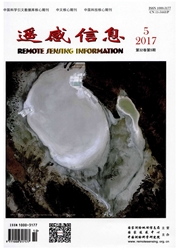

 中文摘要:
中文摘要:
为了满足农业旱灾遥感监测对海量MODIS影像数据的自动化快速处理需要,本文针对现有的四种几何校正坐标变换方法(仿射变换法、多项式变换法、三角网算法和改进三角网算法),结合农业旱灾遥感监测系统,在IDL(Interactive Data Language)平台上开发了MODIS影像数据的自动快速几何校正运行程序,以便比较分析这些算法的几何校正精度、影像处理时间和计算机内存开销大小。结果表明,基于三角网改进算法的几何校正程序在各方面都比较优秀,不仅几何校正精度较高,而且图像处理较快,内存用量也较小,完全能够满足农业旱灾遥感监测的实时海量图像数据处理需要。因此,我们在农业旱灾遥感监测系统中采用了这一算法,作为实时自动快速处理海量MODIS影像数据的重要模块。
 英文摘要:
英文摘要:
MODIS data have widely used in environmental applications such as agro-drought monitoring, which requires fast processing of meta-images. Geometric correction is a key step of meta-image processing in agro-drought monitoring system. Con ventionally the correction was done using commercial programs such as ENVI and ERDAS Imagine, which require intensive human-computer interaction hence are time-consuming and low efficiency. In order to meet the requirements of agro-drought monitoring for fast meta-image processing, we compare four widely-used algorithms in the study in terms of aeeuracy, efficiency and memory: affine transformation, polynomial transformation, triangular network and the improved triangular network. Programs of the four algorithms were made for comparison on the Interactive Data Language (IDL) platform. The results show that the improved triangular network is the most suitable for agro-drought monitoring system because it has the highest accuracy, the fastest processing and the least memory consumption. Thus it has chosen as the geometric correction method in our programming of agro-drought monitoring system for the entire China.
 同期刊论文项目
同期刊论文项目
 同项目期刊论文
同项目期刊论文
 期刊信息
期刊信息
